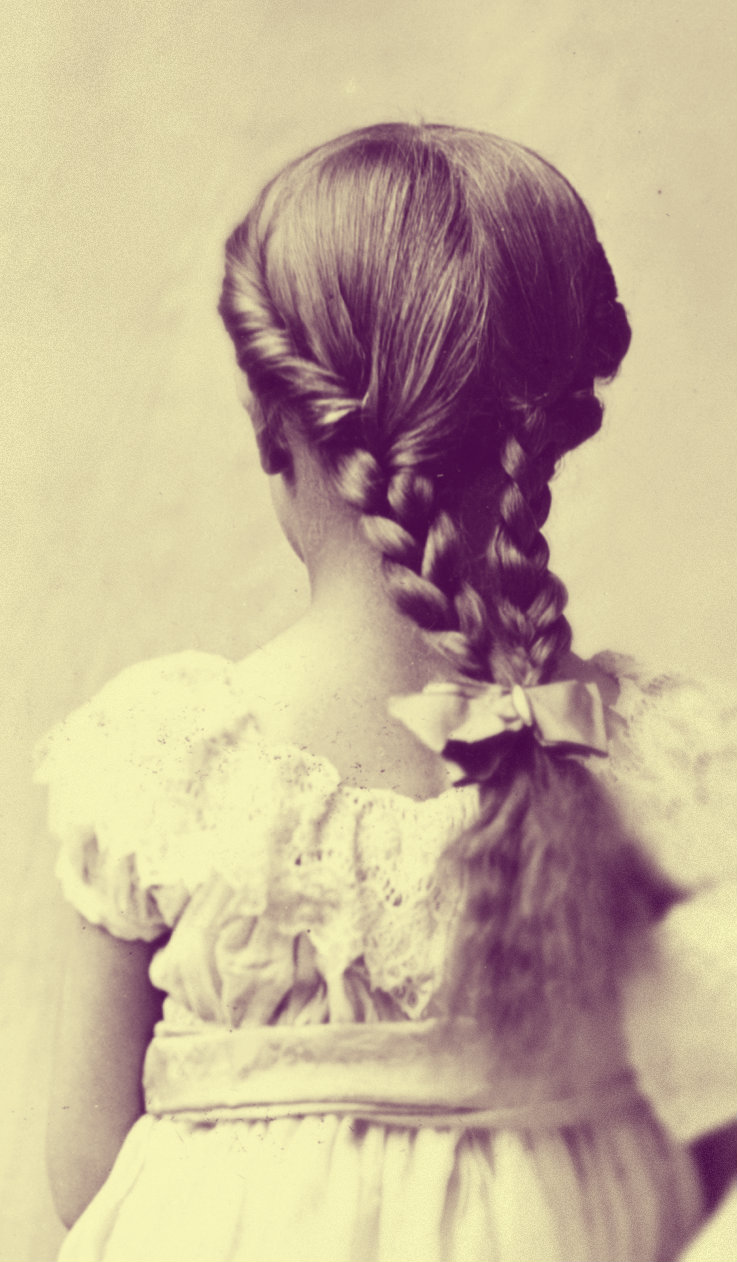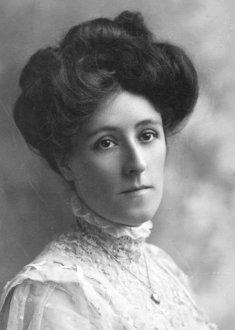Victorian Hairstyles (1837 – 1901)
The years between 1837 and 1901 are known as the Victorian
Era as this was when Queen Victoria ruled Britain. The term “A woman’s crowning
glory” originates from this era, as throughout this time there had been many
different elegant and elaborate hairstyles that were known for their beauty.
These included Barely or Sugar Curls, Crimping, The Marcel Wave, Pompadours,
Chignons, Titus, various styles of braids, Loops, and The Gibson Girl.
Although
the term “a woman’s crowning glory” was used, women in this time period in fact
had extremely damaged hair. During the Victorian era women use to style their hair a lot mainly using hair tongs which had caused their hairs to be dry and damage almost straw like. They hardly washed their hair once it was styled so that they can keep the hairstyle in for long.The heat of the hot iron tongs would often burn the hair and leave a foul odor so women would use powder perfume to help mask the smell of the burnt hair. Women in the Victoria period would never cut their hair unless they had a serious illness.
Early Victorian Era
The early Victorian era was also known as the romantic era. This was when hair was pulled away from the face and tied high at the top in a carefully arranged manner, occasionally with curls hanging by the sides. Another hairstyle during this time was to have the hair parted in the middle and kept smooth over the ears, occasionally braiding the hair at the sides before tying it in to a bun.
*Barley or Sugar Curls - This was a common hairstyle in the early Victorian period, during 1843, where long hair was curled tightly using a hot iron. Women saw this hairstyle as extremely flattering and elegant at the time as it helped to frame the face. over time, women began to experiment with this style and would let a couple of ringlet hang down the sides of their face. This was often seen on younger girls and children along with ribbons to tie the style in place.
*Loops - Women in the early Victorian era often sectioned their hair and wore it in loops. it was extremely popular for women to have a middle parting with the hair looped loosely or as braids on either side of the head covering the ears and tucked back into a bun at the back of the head. This hairstyle did not require the use of any heat so did not damage the hair; in fact it was seen to be one of the most easiest simple hairstyles to create. Women would often create several loops starting from the front of the hair and going back giving the appearance of a sash.
*Braids - Women often included braids in their hair both in the early and mid Victorian era. The hair would often be sectioned in to a few individual braids and then tied together in a ponytail, bun or loops. Braids were often used to complete other hairstyles to give flourishing finish.
Mid Victorian Era
The mid Victorian era was when women would create hairstyles that were much looser to give a more soft appearance. Unlike the early Victorian era where hair was tied high up, the mid Victorian era had women tying their hair much lower at the back of their heads, with soft braids and folds added.
*Crimping - This hairstyle was popular in 1872, where women would experiment with hot iron tongs to create crimped updos, occasionally with braids and hair accessories such as ribbons, lace, beads and flowers to make the style more elegant. At times, women would also crimp their fringe to frame the face.
*The Marcel Wave - This hairstyle was also introduced in 1872 and proved to be extremely popular and was seen as highly fashionable and feminine by women of this time. The hairstyle is named after M. Marcel Grateau, a Parisian hairdresser who invented this natural looking wave style by turning the curling iron upside down. Creating this type of wave required patience and precision as the perfect amount of heat was needed for the tongs to create such a wave. The hot iron was heated on a gas burner in these days and between the time it took to heat the curling iron to the desired heat and apply it to the hair it would often cool down, or it would have heated too long and burnt the hair. Hairdressers would often test the heat on a bit of paper to see if it burns or not before using the curling iron on the hair.
Late Victoria Era
The late Victorian era was the time when women's hairstyles where much more extravagant with hair being in an abundance of curls at the back of the head with long ringlets hanging loosely near the neck. Intricate braiding styles were also used for the hair and carefully arranged with the curls. Women craved more height, curls and intricate braids for their hair and would often wear fake hair pieces to enhance their hair and achieve their desired look.
*Pompadours - This hairstyle was often worn in the late 1880s, where women desired to have their hair up in folds and away from the forehead. many women would add padding and fake hair to add height and volume to this hairstyle to give a fuller and more glamorous look for special occasions. Women would also often pin hats to this hairstyle for even more elegance.
*Titus - This was another hairstyle of the late 1880s, where women would have their hair cut very short around the head with ringlets hanging loosely on the sides. Various accessories were added to make this short hairstyle look more feminine, however the look did not last very long as women were afraid to wear this type of style in a conservative society where women were expected to have longer hair.
*Chignons - This hairstyle was extremely popular in the late Victorian era. it was created by pinning the hair into a bun low at the back of the head close to the nape of the neck, however some women would also place the chignon style at other areas of the head such as the middle between the crown of the head and nape of the neck. Women would also apply fake hair for volume and padding to create a fuller looking beautiful Chignon hairstyle.
* The Gibson Girl - This was a tremendously popular hairstyle known as the century's first pin up and invented by an illustrator named Charles Dana Gibson in 1902. Gibson created the image to represent what was thought to be the ideal woman. This hairstyle included a soft pompadour with a puffed out cloud like effect. The softness and looseness of the hairstyle represented women who were independent, simple and laid back. This hairstyle looked very graceful and beautiful on women and gave an effortless, carefree feel as opposed to the carefully arranged tight hairstyles earlier in the Victorian era.

As we can see, the hairstyles evolved over the years in the Victorian period, from tightly arranged curls with smooth hair in the early half to soft, loose and puffy hair with lots of volume and height in the latter half. Women continued to experiment with hot iron tools to create desired looks of femininity and played around with accessories to achieve a completed look. The Victorian Era is known to have contributed enormously in the hair and beauty industry with its vast array of styles that are still incorporated in many hairstyles today.
References:
http://www.crystalinks.com/hair.history.html
http://elegance-of-fashion.blogspot.co.uk/2012/07/wednesday-guest-post-by-melody-and-miss.html
http://mute-the-silence.blogspot.co.uk/2011/12/victorian-hair-styles.html
http://careyagothichorror.blogspot.co.uk/2015_02_01_archive.html
sh

























0 comments:
Post a Comment